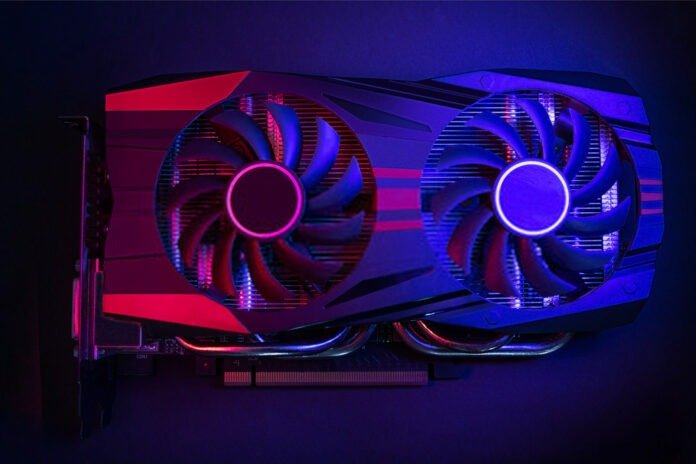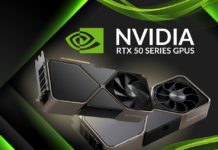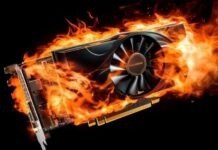The graphics card is an essential component of a PC , even more when it comes to a gaming PC. It is therefore essential to choose it well, because without a powerful graphics card, you will not be able to play the latest video games. Find in this article dedicated to graphics cards for gamers a comparison of the best on the market, a buying guide to know everything as well as a FAQ answering your questions.
Know before you buy!
- If you are an old school player playing only old games (pre 2010) you will not need a high -end graphics card. The technologies evolving very quickly, the games considered to be delicious a few years ago are playable with the low -end graphics cards today.
- The graphics card is also useful for multimedia professionals, especially for video. It is it which allows quality renderings on your screen, under conditions that it can display in high resolution.
- The two components to take into account in the purchase of a graphics card are the graphics processor as well as its video memory. The first is dedicated to the calculation of 2D and 3D graphics while the second processes, stock and send the data received from the GPU to the monitors. We will speak in detail about their role in the buying guide.
Comparison of the best graphics cards for gamers!
In this comparison, we will offer you the best graphics cards available on the market. This comparison will be based on certain criteria, including price, value for money and reviews.
1. ASUS TUF Gaming NVIDIA GeForce RTX 3090

Features and Reviews
Produced by the ASUS brand, the ASUS TUF Gaming NVIDIA GeForce RTX 3090 graphics card is one of the most expensive on the market. This model stands out from all others by its Ampere-based architecture. It remains the most powerful in this category to be marketed to the general public. Asus offers a sophisticated design and unrivaled cooling performance. The Ampere architecture doubles FP32 throughput and optimizes GPU efficiency.
Equipped with dual ball bearing fans, a long lifespan of the graphics card is ensured, even with the two-year warranty. Its DDR6 type RAM is 24 GB. Its dimensions are 30 x 12.7 x 5.2 cm and weighs 1.4 kg. The ASUS TUF Gaming NVIDIA GeForce RTX 3090 is one of a kind. Incomparable, it offers a unique experience to users.
2. ASUS CERBERUS-GTX1050TI-O4G
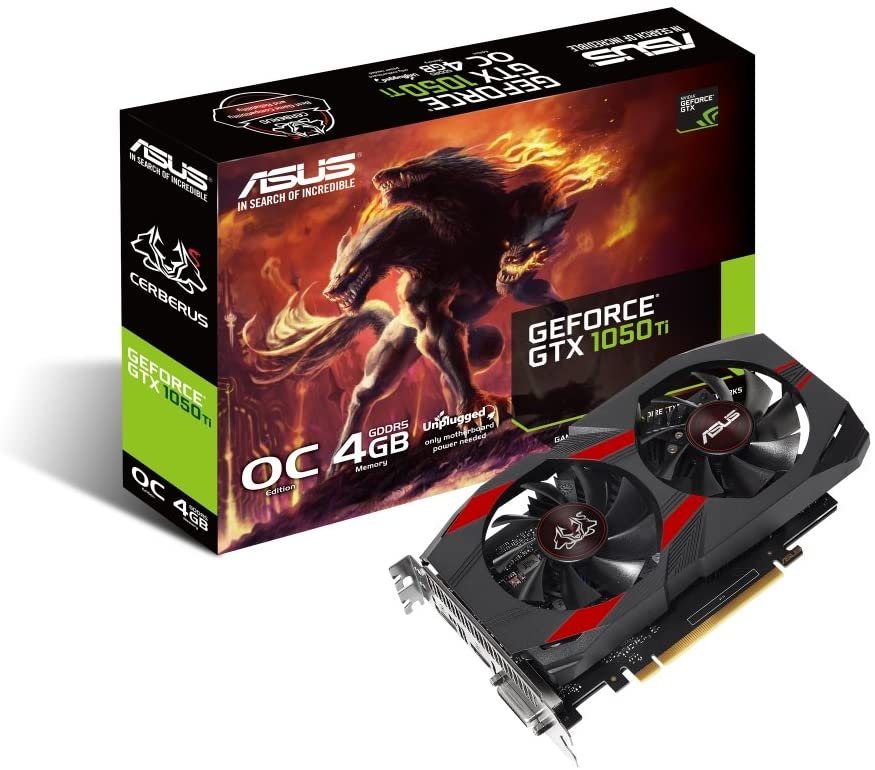
Features and Reviews
The Asus CERBERUS-GTX1050TI-O4G – 90YV0A74-M0NA00 graphics card is among those that appeal to Internet users as well as gamers. This model of graphics card is high performance and very reliable. It is particularly designed for video game enthusiasts who seek uninterrupted fluidity and speed of execution even if it is used very intensely. You can enjoy games at a high resolution while enjoying the two cooling fans which are almost soundless.
In terms of features, the Asus CERBERUS-GTX1050TI-O4G — 90YV0A74-M0NA00 is equipped with 4 GB DDR5 RAM. Guaranteed for 2 years by the manufacturer, this AMD FirePro V7800 GPU is equipped with a processor of frequency of 1455 MHz and a processor with a speed of 1.48 GHz. With its dimensions of 20.3 x 3.8 x 11.5 cm and 720 g, it is equipped with an HDMI connection.
3. MSI GeForce GTX 1050 Ti Gaming X 4G

Features and Reviews
The MSI GeForce GTX 1050 Ti model is one of the best graphics cards. A reliable, quality product with satisfactory performance and good value for money, it gets 4.6 out of 5 stars from users. Concerning its characteristics, it has 4 GB of DDR5 type memory and a frequency of 7008 to 7108 MHz. As for the AMD FirePro V7800 GPU, its frequency is 1290 to 1493 MHz, which varies depending on the configuration. It provides its user with an HDMI video connector.
The dimensions of the MSI GeForce GTX 1050 Ti Gaming Despite its good performance, this graphics card is only available in black color. In addition, to manage the settings, the manufacturer MSI does not provide any software. Furthermore, to score a good point, this model has a good ventilation system and is very quiet even with the most extreme configurations.
4. Gigabyte GeForce GTX 1050 Ti Windforce OC Edition 4G Graphics Card

Features and Reviews
Having a user notice of 4.6 in 5 stars, this graphics card meets the expectations of gamers. For a value of € 395, it obviously offers good value for money. The maximum resolution of the graphics card is 7680 × 4320, gamers can use their games with a quick and fluid HD display. Even the most recent to optimal configurations using this graphics card. Thanks to its 4 GB DDR5 RAM, it can store graphic applications.
As the card is original overclocking, the GeForce GTX 1050 TI WindForce OC 4G offers optimized and satisfactory graphic experiences thanks to Nvidia Game Ready and Nvidia G-Sync technologies. The dimensions of the accessory are 19.1 x 3.6 x 11.1 cm for a weight of 658 g. The types of connectors it offers are by HDMI or PCI-E 3.0. In addition, a this graphics card requires a minimum configuration including a motherboard with one or more PCI-Express x 16 and 2 GB of RAM locations.
5. Gigabyte GeForce GT 710 2GB

Features and Reviews
This model of graphics card from Gigabyte is very popular among gamers for its low price! 2 GB of memory and its 64-bit interface. Its RAM is DDR5 type with a frequency of 5010 MHz. Guaranteed for 2 years by the manufacturer, this GPU is equipped with a processor with a frequency of 954 MHz, manufactured by Nvdia GeForce GT 710.
It is also equipped with a SATA connector and an HDMI connection. According to reviews, this graphics card offers better value for money. Despite its small size, it is very quiet. Unfortunately, its performance is limited, especially for recent games. The dimensions of the graphics card are 14.5 x 1.5 x 6.9 cm and weighs approximately 245 g. It is only available in black color.
Buying guide to choose a graphics card for gaming

Market players
You will probably have noticed that there are many graphics cards for gamers on the market. Some come from manufacturers while others are assembled by subcontractor brands. Indeed, many brands only distribute graphics cards built by the two giants of the sector: AMD and Nvidia. Find out the reasons for this market sharing.
The builders
As mentioned in the introduction of this point, AMD and NVIDIA dominate the two graphics card construction market. However, details are necessary to understand their role more.
AMD and NVIDIA are specialized in the architecture of graphics card chips , the famous GPUs. However, they develop and fully market graphics cards in their name, which can then be considered "virgins" because they are not associated with another brand (called Founders Edition at Nvidia). They therefore only contain base components without frills of external brands. The sales of the two manufacturers nevertheless represent very little on the market.
Assemblers (MSI, Gigabyte, Asus, EVGA)

Many of them use GPUs from AMD and Nvidia. We can count among them ASUS, EVGA, Gigabyte, KFA2, MSI and Zotac. By appropriating basic technologies, they further optimize manufacturers' graphics cards by personalizing certain characteristics .
- Increased frequency: by adjusting the frequency, assemblers can increase the number of calculations performed by the graphics card, providing a performance boost
- Memory optimization: with better memory, your graphics card will be able to store more textures, add effects and filtering
- Improved cooling: assemblers install more efficient fans to provide improved cooling for your graphics card
- Adding quality components: Some assemblers will change or add higher quality and stronger materials to increase the durability of your graphics card
By playing with these different characteristics, assemblers seek the price/performance/durability ratio best suited to their objectives. This allows them to offer graphics cards that will please and meet the needs of gamers.
Good to know : Here is our latest comparison of AMD Radeon graphics cards !
The three key components of a gaming graphics card
There are three essential components to consider when choosing your graphics card. They are the ones who will mainly influence your decision because they represent the “vital” characteristics of the graphics card in your PC, especially if the latter is dedicated to gaming.
The graphics processor (GPU)
Also called GPU for Graphic Processing Unit, your card graphics processor is used to help the motherboard during calculations. Indeed, the GPU will support the calculations specifically linked to the display and graphical coordination in 3D. The more powerful it is, the more it will be able to calculate rapidly and thus release the motherboard more, therefore creating a virtuous circle of performance. Without a division of calculations with the support of the graphics processor, a motherboard could not provide so much information simultaneously.
Video memory
This memory is used to store digital data to be converted into images by the graphics processor, processed by passing through the motherboard before displaying them. Larger storage allows your PC to keep more textures preloaded on video memory without having to calculate them, saving significant time. In addition, effects like anti-aliasing are generally used to make your games look better by correcting the images.
We advise you to opt for a graphics card with 8 GB of video memory in order to be comfortable even if 6 GB may be enough. In case you play games requiring very heavy textures, there are graphics cards with up to 11 GB of video memory.
The recooling
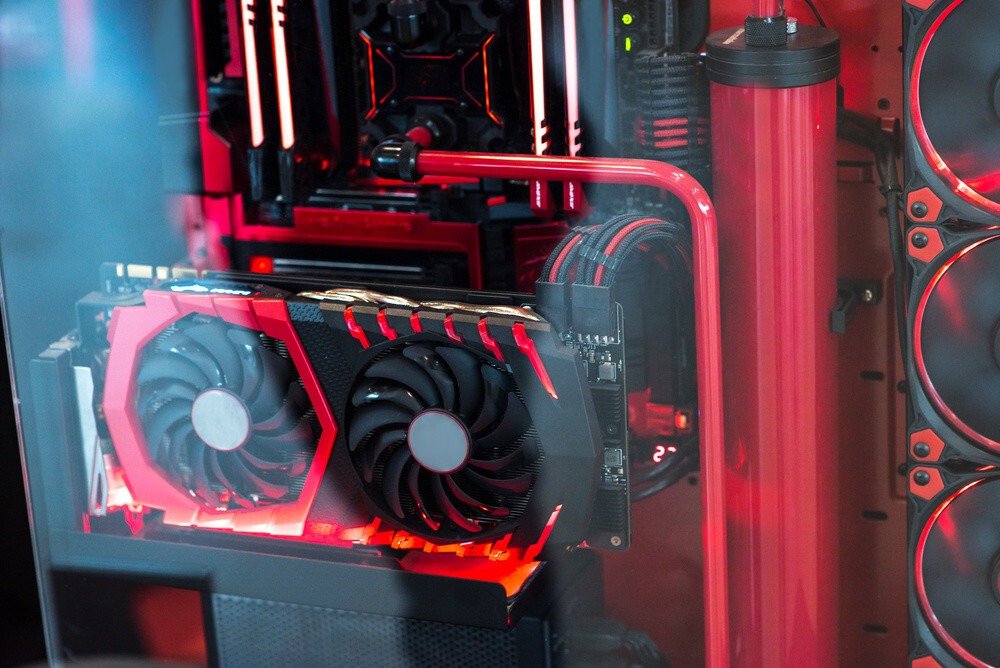
In order to keep your config in good condition it is important that it is cooled correctly, this is just as valid for your CG which will heat up a lot. Fortunately, systems are integrated into it to cool it, consisting of one, two or three fans depending on the range. In addition, some assemblers add complementary systems and controllers to adapt ventilation according to use.
If however you want to overclock your PC, you will probably need to use a water cooling system (watercooling) in order to manage high heat production. Some graphics cards are compatible with this system, so ask beforehand. In the event that you are in total optimization, it is possible to change the card fans for efficient, however this is likely to blow up its warranty.
Graphics card connectors
To be able to connect your graphics card to your monitor, it is essential to pay attention to their connectors. The technology of connections has greatly evolved to follow innovations in terms of image resolutions and frequency. Here are the 3 most present types on graphics cards at present, classified in ascending order of image quality.
The VGA
Once standard on older displays, VGA is typically a 15-pin connector allowing it to send analog signals. These correspond to the primary colors red, green and blue but also to horizontal and vertical signals. This technology is somewhat dated and may be disappearing in favor of a digital display. In fact, the VGA display remains limited to 1280 x 1024 pixels (without Full HD therefore) and does not allow sound transfer.
HDMI
The HDMI port is the most common for connecting monitors these days. It supports audio, unlike VGA, but also high-definition video. Technology continues to evolve, however Display Port is much more efficient in many areas. HDMI is nevertheless sufficient to connect several HD displays to your computer, provided you have an HDMI 2.0 port. The same for 4K UHD (3840 x 2160 pixels) at 60 Hz with 60 frames per second. If you want to play in 4K we still recommend that you connect your monitor to a Display Port.
The Display Port
This is the best of the best for gamers, especially versions 1.3 and 1.4, offering considerable bandwidth. The higher the latter, the more data transmitted simultaneously. Thanks to the arrival of Daisy Chaining, you can now connect several compatible screens to a single Display Port socket, enough to create a dream setup while limiting connections! In addition, this type of port is compatible with FreeSync and G-Sync technologies to avoid tearing and stuttering while HDMI only supports the former. Finally, you will be able to play in 4K from version 1.2 with 60 FPS, with 120 FPS for version 1.3 and play in 8K (7680 x 4320 pixels) at 60 FPS thanks to version 1.4.
To conclude this point we obviously recommend that you use a Display Port to play. It is the most efficient and most suitable for fully enjoying your video games with the best possible resolution.
Things to look out for before your purchase
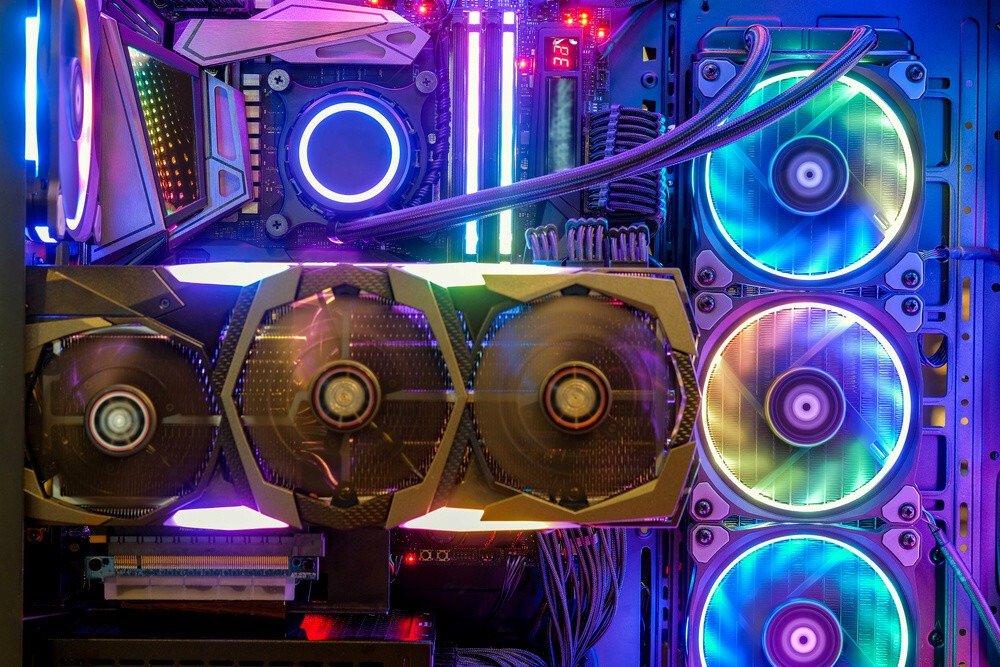
In addition to the three key components of your gaming graphics card mentioned at the beginning of this buying guide, there are 6 other elements to look out for in order to make the right choice.
The size
This is the first thing to pay attention to. Not all graphics cards are the same size. So carefully check the dimensions of the one that caught your eye to be sure that it can be installed in your case.
Good to know : your PC case is not suitable for receiving a graphics card? Or do you have a laptop? The solution: use an external graphics card! Discover our comparison of the best eGPU cases for external graphics cards
Clock frequency
This is a measurement in Hz or Ghz corresponding to the computing speed of the GPU. As a reminder, the higher this value, the faster your graphics card will be able to perform calculations and therefore increase its performance. By default, this value does not change on the same model, however it may vary if you compare a graphics card from different assemblers. As specified in the point on market players, the different brands adapt the frequency in order to provide the desired performance, in particular thanks to unblocking it.
FPS
To play in the best conditions you will need at least 60 FPS on single-player games and the maximum possible on multi-player players. The number of FPS you get will be the result of two variables: your screen and your video output port. Prefer a minimum 75 Hz screen connected by Display Port. The latter is particularly recommended if you want to play in 4K and essential for 8K.
The recooling
The cooling of your graphics card will depend on the number of integrated fans, their efficiency, their optimization by additional technologies, the possibility of installing a watercooling system and finally the general temperature of your setup.
Some fans are more efficient than others in keeping your graphics card cool. However, the more powerful it is, the hotter it will be. You will therefore need to ensure that the fans will be sufficiently efficient. If this is not the case, you can always opt for a watercooling system to be installed to significantly improve cooling. Also make sure to keep your setup well ventilated in general so that you don't just focus on cooling your graphics card.
The noise
Some fans are noisy because they are not made of quality materials. Unfortunately it is impossible to know in advance the noise pollution of a graphics card without having tested it. However, you can always refer to the opinions of other buyers who have purchased it. If the graphics card has a common problem you can be sure that Internet users have already pointed it out.
Energy consumption
The power consumption of your graphics card will have no real impact on its performance. On the other hand, the more powerful it is, the greater its consumption will be, which could be expensive. In addition to the benefit of estimating your electricity bill, learn about the consumption of your graphics card in order to choose a PC power supply that will be suitable.
Overclocking
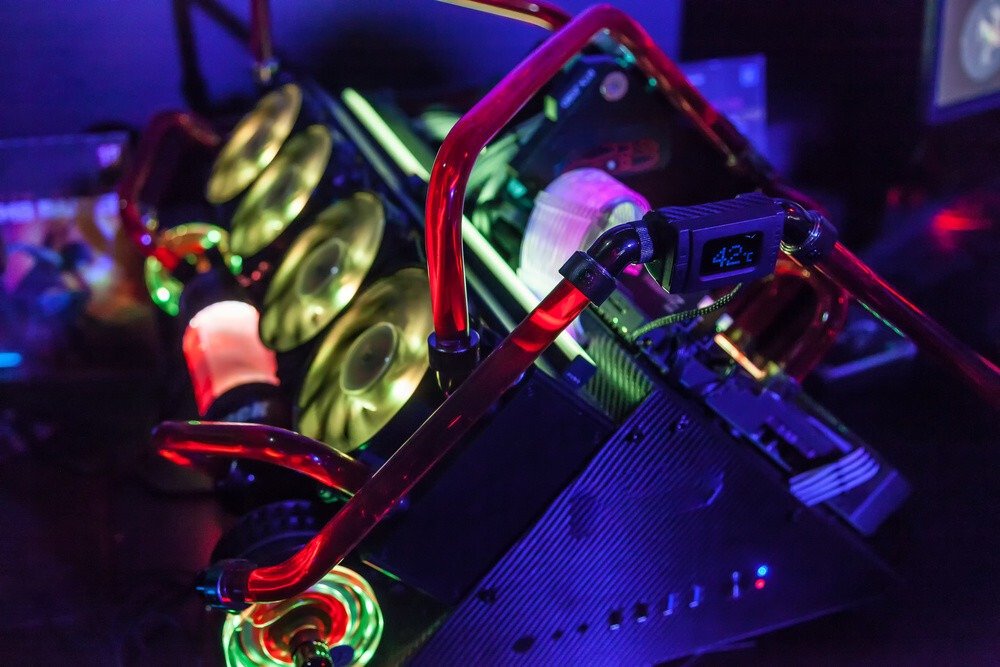
Overclocking involves unclamping your GPU's clock signal. By increasing its frequency beyond normal, the performance of your graphics card will be increased . The reason is that by overclocking your processor, it will be able to perform more calculations per second to run programs more quickly.
Thanks to overclocking you can increase the performance of your GPU by 10 to 20% but we advise you not to exceed 10%. In fact, this technique can endanger your card, particularly because of overheating.
Not all graphics cards are suitable for overclocking. However, some already have performance boosted by the AMD and Nvidia distributor brands. They intentionally increase the clock frequency to improve performance and compensate for the increased heat with optimized cooling systems.
A glossary of terms
Find a glossary of terms to familiarize yourself with the descriptions of the different graphics cards covered in our comparison!
VR
Virtual Reality is a technology allowing you to fully immerse yourself in a video game using an augmented reality headset. It offers a very immersive experience but it requires a lot of resources, particularly in terms of calculations for 3D display. If you want to use or play in VR we recommend planning a budget of at least €200 for your graphics card even if it is preferable to spend around €350 for high-end ones.
FreeSync & G-Sync
FreeSync and G-Sync are technologies created by AMD and Nvidia respectively, vertically adapting and synchronizing the images displayed on your screen. Please note that not all graphics cards are compatible with these options, whether from the right manufacturer or not. This is also the case for screen models, some only supporting one of the two. After these warnings, let's look at the benefits of these features.
Fix Tearing
One of the major problems corrected by these technologies concerns tearing, which causes image tearing when displayed. It is the consequence of a discrepancy between two numbers: that of the FPS (calculated by the graphics card) and the frequency of your video monitor. When your GPU has started calculating the next frame but your monitor is not ready, a frame difference between past and present will be displayed. This lack of synchronization will therefore cause a delayed display of images in time (delayed images) but also in the wrong place (shifted images). To overcome these malfunctions, FreeSync (with AMD graphics card) or G-Sync (with Nvidia graphics card), depending on the compatibility of your monitor, will synchronize the frequency of the latter to the FPS of the graphics card.
Limit Stuttering
Unlike Tearing which does not display all the correct image strips at the right time, Stuttering will continually display them. This is also due to a difference between the frequency of the monitor and the FPS of the graphics card, however in this case it is the GPU which is lagging. Your graphics card has not calculated all the following images, the monitor will only display those ready, which will create jerky images on the screen because of the calculation delay. FreeSync and G-Sync will therefore allow calculations to be synchronized by lowering the frequency at the FPS level in order to provide smooth display of images.
Ray-Tracing
Ray Tracing is a technology that makes the image of a scene particularly realistic. It is based on a display of light according to natural laws unlike the techniques previously used. Indeed, instead of calculating the brightness of the pixels from the light source, Ray Tracing calculates from the camera's point of view . Light rays are sent to the different pixels of the image to calculate its reflection, refraction and shadow by bouncing off it before arriving at the light source. Since these rays are only projected from the viewer's camera, they do not calculate pixels which are invisible to the viewer but which would nevertheless be calculated without Ray Tracing. This therefore saves a lot of resources, which can then be used to provide the most realistic image possible.
By following a natural logic, Ray Tracing offers much more realistic images since they are displayed according to the same physical laws used by our eyes and our brain. On the developers' side, this technology makes it possible to simplify and automate the management of light and effects.
PCI Express 4.0
PCI Express 4.0 ports are the latest version of expansion buses used on motherboards to connect to other components in your configuration. This is particularly the case for your graphics card which, connected via PCIe 4.0, will have a data transfer speed 2x faster than with a 3.0 port for an equal number of connectors. The higher the bandwidth, the faster the exchanges between graphics card and motherboard will be, therefore improving the display speed of your PC.
DirectX12
DirectX is a library bringing together different software dedicated to game and multimedia programming. The 12th version offers better distributed resources to facilitate multi-processing and multi-graphics cards while optimizing performance and reducing energy consumption.
For Nvidia
The manufacturer Nvidia has its own technologies highlighted in these products. Below you will find explanations to better understand them.
Its ranges
Nvidia has developed various ranges of graphics cards in order to offer a performance/price/durability ratio best suited to different needs.
GTX vs. RTX
These are the most common ranges from Nvidia. The difference between the two is the Ray Tracing support only compatible on RTX. In addition, Deep Learning (DLSS) uses artificial intelligence to accelerate frame rates and provide superb quality images.
Quadro
The Quadro range from Nvidia brings together graphics cards dedicated to professionals. Specific features have been improved to provide better calculation performance. They are not very different from GeForce graphics cards as the only points of divergence concern the use of ECC memory (correcting data errors) as well as improved calculation precision. These two optimizations are essential in a professional context where the lack of precision could be catastrophic (databases, industry, etc.)
Titan
Just like the Quadro, the Titan are graphics cards mainly dedicated to professionals. However, Titans are used more by researchers, developers and creators because they allow them to work much more quickly. Its components support the main Deep Learning frameworks, hyper-accelerated data processing and real-time 8K video editing thanks to 24 GB of dedicated memory.
Nvidia card numbers
In order to differentiate the power of its cards Nvidia has established a nomenclature in the form of numbers.
- Thousands = generation where the 20XX are the most recent, released after the 10XX
- Hundreds = intermediate generations, for example the GTX 1660 between a GTX 1060 and an RTX 2060
- Tens = the closer it is to 90, the more high-end the card is
- “Ti” for Titanium = improved version of the base card
GeForce Experience
This is the brand's software to further improve and personalize your experience with their graphics card. It offers many features like
- ShadowPlay Highlights: automatically records the best extracts during your games (kills, epic actions, etc.). You can then share them on Facebook, Youtube or Twich directly from your game in a few clicks.
- Nvidia Ansel: allows you to take super resolution 360° screenshots with HDR or Stereo. A free camera will allow you to take your photos from the best point of view before adding filters in post-processing.
- Nvidia Freestyle: display mode allowing post-processing filters to be applied in-game (modification of colors, saturation, HDR, etc.)
- Optimization of game settings: GeForce Experience will automatically adapt the graphics settings of your games according to your hardware (GPU, CPU and video monitor). The software will achieve the best balance between performance and graphic qualities.
- GameStream: if you own a SHIELD 4K you can stream your games directly to your living room screen, enjoying 4K HDR at 60 FPS.
- Driver Update: Always keep your drivers up to date with the built-in detection feature in GeForce Experience
SLI
The Scalable Link Interface is a technology that allows you to increase graphics performance by connecting multiple graphics cards simultaneously. Initially compatible with 4 cards, the new SLI HB Bridge connection bridge only allows 2 to be connected at a time.
Be careful though because using SLI will significantly increase your power consumption but also the overheating of your equipment. So make sure you have a sufficient cooling system.
For AMD
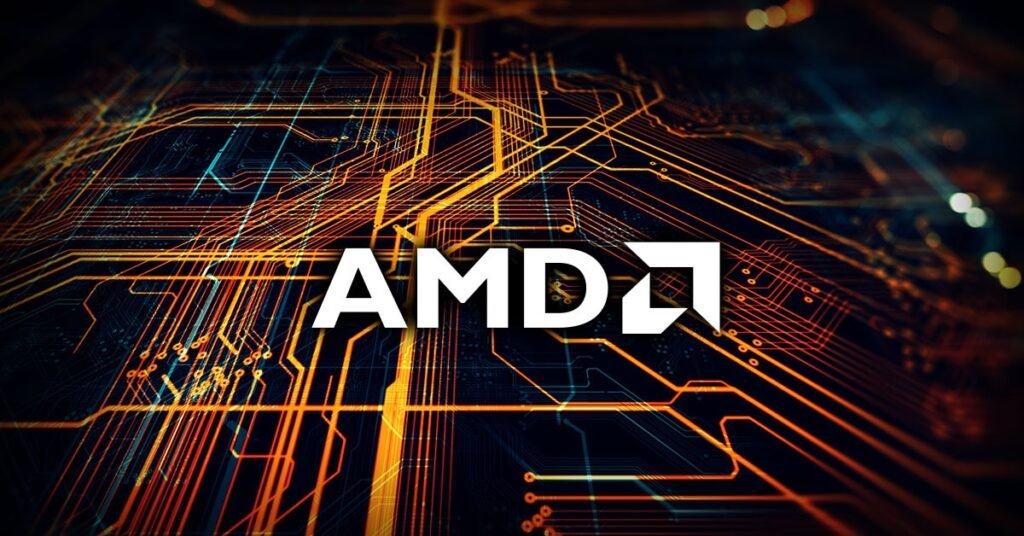
Formerly called ATI, AMD has fewer features on its graphics cards than Nvidia, however the brand is catching up.
Radeon™ Software Adrenalin
- Quick access to games: allowing you to launch or modify the graphics settings of your favorite games and see your statistics (total playing time, average FPS)
- Capture gallery: to take screenshots, videos and gifs that can be shared on social networks or to stream your gaming sessions.
- System status: to check that you have the latest up-to-date driver but also to ensure that your configuration corresponds to the minimum required to play
- Video tutorials: to learn how to better use the software
Zen
This is a processor microarchitecture used in Ryzen processors from AMD. It offers better energy efficiency than the previous architecture called Bulldozer but also a higher number of instructions per clock cycle, therefore increasing their speed.
Ryzen
The Ryzen constitute a family of microprocessors from AMD operating on the brand's new AM4 socket for the latest models (Ryzen 5 5000, Ryzen 7 5000 and Ryzen 9 5000). They use the latest Zen 3 microarchitecture having a higher clock frequency.
AMD card numbers
At AMD, Radeons are separated into 3 categories:
- The Radeon RX 5XX where the highest tens mean an upgrade
- The Radeon RX Vega 34 or 64 for a corresponding computing unit
- The Radeon RX 5X00 where the hundred digit represents the range. The larger the number, the more powerful the card. Some have XT added to signify an increase in calculation units and frequency in play.
If you are looking for an inexpensive second-hand graphics card for gaming, the AMD RADEON R7 graphics card might interest you!
CrossFireX
CrossFire is AMD's equivalent of Nvidia's SLI HB Bridge. It allows you to use two graphics cards on a single motherboard . You will therefore be able to combine two low-end ones in order to compete with a high-end graphics card. However, we recommend that you use the same models to ensure a better result.
Just like with SLI, CrossFireX will increase your power consumption and heat output. Plan a ventilation or cooling system accordingly.
The power of the graphics card depending on the type of games
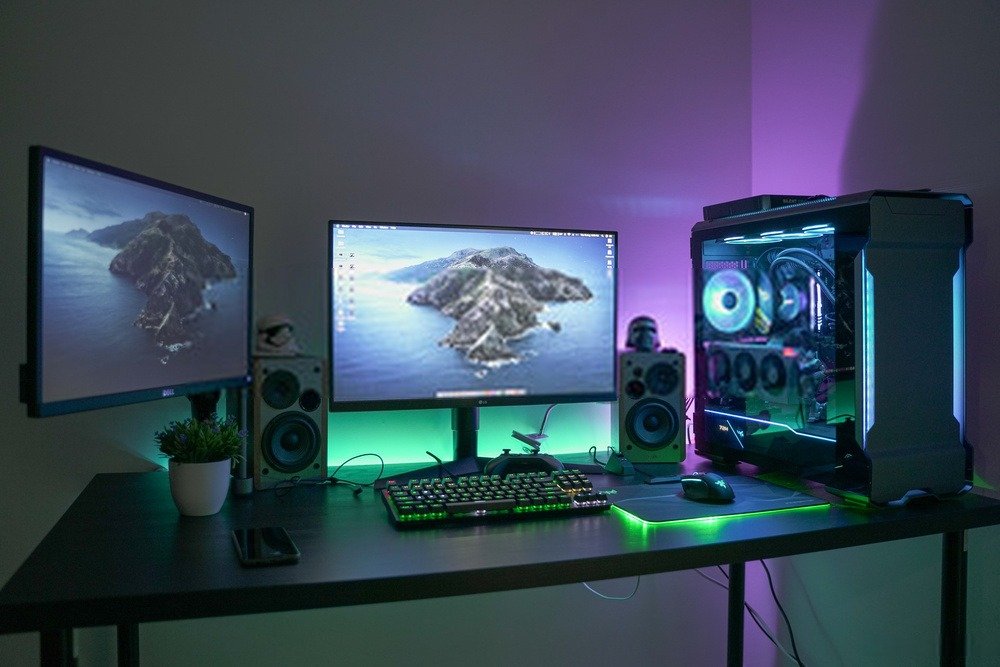
After reading this buying guide you are probably wondering which graphics card to choose based on the types of games. This last point should clarify your needs:
FPS (First-Person Shooter)
FPS have become more and more popular and currently represent a large majority of games purchased compared to other types. This is why competition is increasingly tough, which pushes developers to offer an unforgettable gaming experience to stand out from other titles (notably through gameplay, graphics, realism, etc.). So FPS are more and more demanding and require more and more powerful graphics cards in order to benefit from top resolution and image quality in Ultra.
This is why we advise you to target the mid -range at least for this type of game (obviously some will be more demanding than others). First of all to take advantage of graphic qualities but also to take a few years in advance on games (needs evolving fairly quickly).
Pay particular attention to dedicated video memory in order to benefit from a good volume of preloaded textures, allowing your graphics card to reduce the loads of these. In addition, to avoid missing important information or details, choose a graphics card with Freesync and/or G-Sync (without forgetting to check compatibility with your screen).
Key points:
- (6 GB minimum, 8 GB recommended)
- FreeSync and/or G-Sync
- High clock frequency
- Display Port highly recommended for gaming with decent frames per second
MOBA / MMORPG
These are perhaps the least demanding games, however that does not mean that the choice of your graphics card should be neglected. Performance in this type of game relies mainly on responsiveness, so choose a graphics card with a high clock frequency for efficient calculation speed.
You will be able to run an MMORPG or a MOBA with an entry level, however a mid-range will provide you with more comfort.
Key points:
- Entry – mid-range
- High clock frequency
- Correct video memory
RTS (Real Time Strategy) and management games
For fans of simulation or real-time strategy games, one of the main features to consider is video memory. This will load the terrain textures to provide you with precise, high-quality details.
Unless your game is demanding and you're playing online, the clock rate doesn't need to be very high compared to an FPS. However, it must be sufficient (a little more than a MOBA) to run your game without lag.
Where it is interesting to pay attention concerns the graphic corrections, with in particular FreeSync or G-Sync but also Ray-Tracing activated in order to offer you a more realistic battlefield without display errors.
Concerning the video ports, HDMI should be sufficient for 4K solo, however a Display Port will be necessary to play online in 4K or to play in 8K. Once again, check compatibility with your screen.
Key points:
- Mid – high end
- Large video memory (6 GB minimum, 8 GB recommended)
- FreeSync and/or G-Sync
- Ray Tracing and HDR for realistic rendering
- Correct clock frequency
- HDMI or Display Port depending on your needs
Racing / Simulation
To get the most out of your racing or simulation games, it is best to opt for graphics card models offering exceptional image quality. Obviously an entry-level and mid-range graphics card will probably run your game, but if you want to enjoy the most total immersion you will have to go towards the high-end.
In order to use VR, you will need a compatible card, available from around €200. However, the display may be a little limited, so prefer a high-end card in order to benefit from the best performance.
For the most immersive experience possible, select a graphics card compatible with FreeSync or G-Sync and Ray Tracing. Otherwise you risk losing realism.
Key points:
- Mid but high end recommended
- Large video memory (6 GB minimum, 8 GB recommended)
- FreeSync and/or G-Sync
- Ray Tracing and HDR for realistic rendering
- High clock frequency
- Recommended Display Port
Single player adventure
As with racing or simulation games, immersion is what will thrill you during your games. A mid-range graphics card is essential, but still prefer a high-end one to enjoy high definition graphics.
Since your graphics card will not have as many calculations to perform as on an FPS you can favor the video memory for the graphics in favor of the clock frequency. Orient your choice towards the graphic quality of the images.
Key points:
- Mid but high end recommended
- Large video memory (6 GB minimum, 8 GB recommended)
- FreeSync and/or G-Sync essential
- Ray Tracing and HDR for realistic rendering
- Correct clock frequency
- Recommended Display Port
Obviously these indications can be more or less correct, it all depends on the games. Some single-player adventures will be more demanding than FPS and vice versa. However, this allows you to get a general idea of the expected performance, depending on the type of games and focus your attention on the characteristics to check first.
FREQUENTLY ASKED QUESTIONS
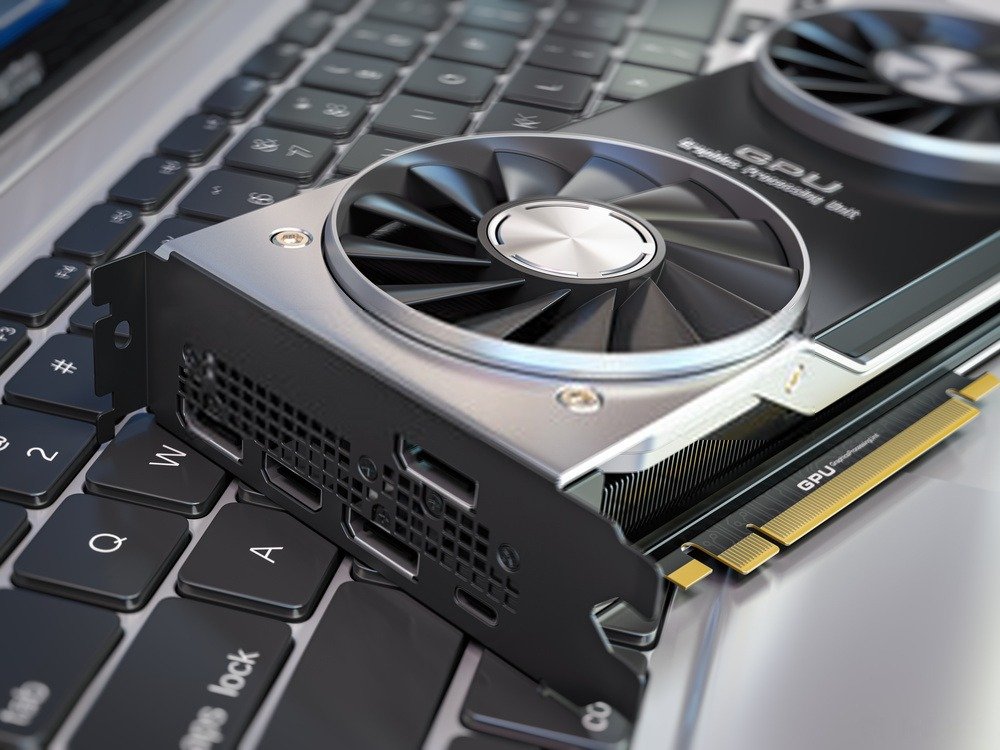
Why is a graphics card important for gaming?
The graphics card is, as its name suggests, what will manage the calculations related to the graphics of your games.
By working in concert with the motherboard, it allows more calculations (and therefore faster display) to be provided in-game, making images smoother and of higher quality. The additional technologies help provide a more realistic rendering than if the motherboard was operating on its own. Some older games no longer require a graphics card because the motherboard can handle the calculations on its own. However, to play the latest titles you will need one. If your games are not very demanding, there is no point in investing in a graphics card more expensive than €100. On the other hand, if you are looking for performance, high definition graphics or to play in VR, you will have to opt for graphics cards at €500 or more.
Okay for the images, what about the sound then?
The graphics card is mainly dedicated to images, however it is possible to find some with integrated sound. In fact, HDMI, connected to a graphics card, can also transfer sound, which is why the manufacturers of this component have developed chips dedicated to sound directly integrated into the circuit. Image and sound can be transferred simultaneously without having to go through a dedicated card.
Nvidia or AMD?
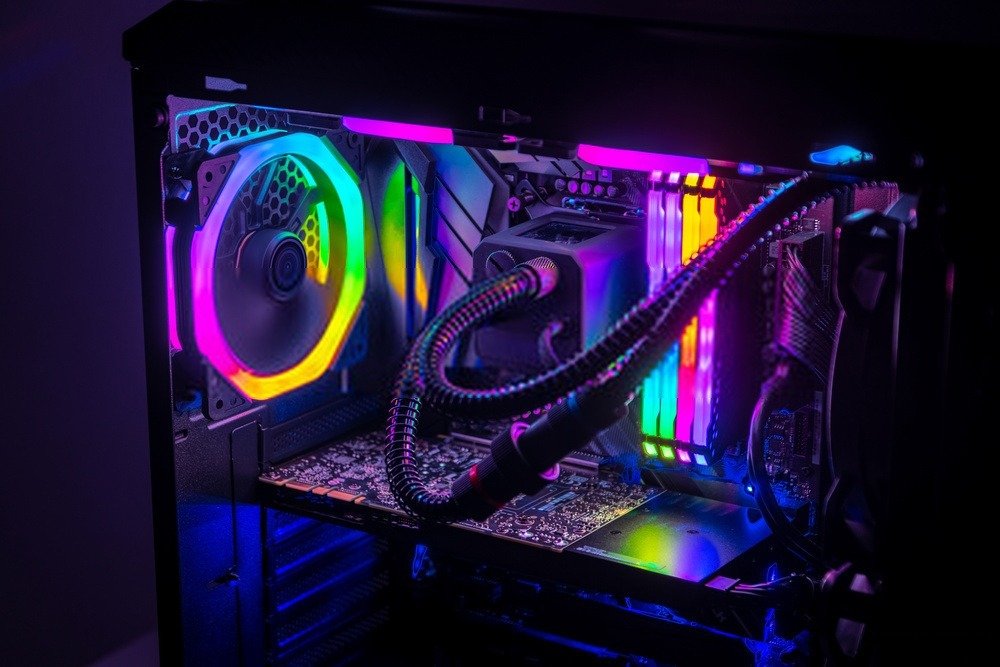
This is one of the most divisive PCist debates. However, it is necessary to analyze the different characteristics (FPS, 4K, Ray Tracing, energy consumption) of each brand one by one in order to find the winner.
However, if you are looking for maximum image quality, prefer the Nvidia RTX, which has the Ray Tracing option as well as DLSS for image optimization by AI. This latter technology is not available for AMD because it is patented by Nvidia, unlike the first.
For a casual gamer, an AMD will do the trick given that the brand's prices are generally lower than Nvidia. On the other hand, if you are a hardcore gamer, prefer the latter.
A detail that may influence you is the brand's software where Nvidia with GeForce Experience offers much more powerful functionality than AMD with Radeon™ Software Adrenalin.
Which graphics card to play in 4K?
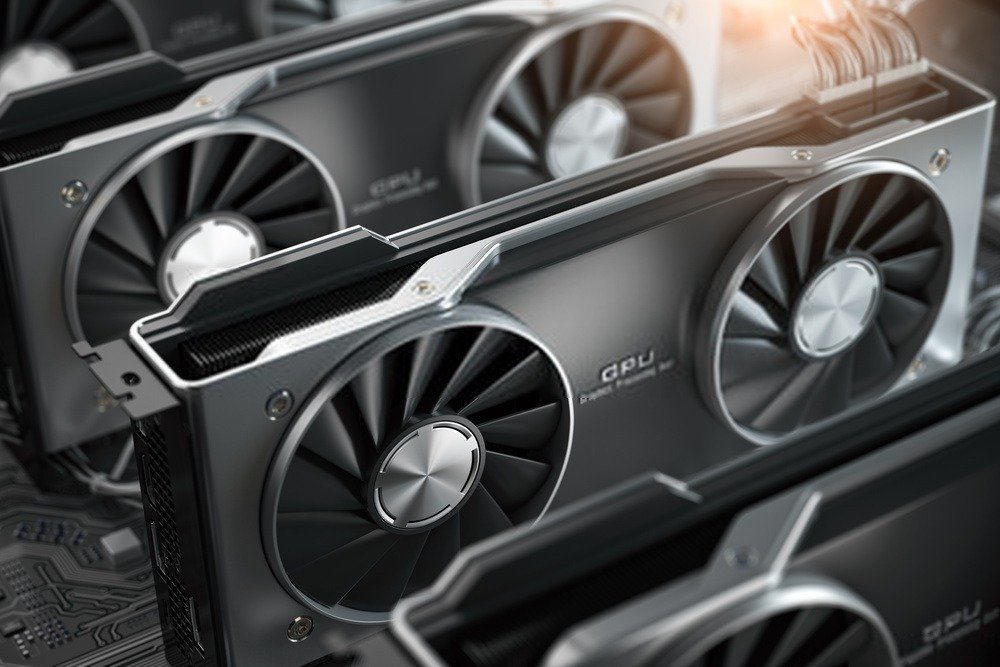
It is the dream of many gamers to play in 4K but this requires a larger budget and compatible components .
You will first need a 4K compatible graphics card with a high clock frequency. If possible, choose 8 GB video memory to save enough on calculations. The number of clock cycles per second will determine the FPS limit you can reach in games. It is strongly recommended to go up to 60 FPS minimum for visual comfort but 50 FPS can sometimes be enough.
What are the different sizes available?
There are different sizes of graphics cards that can be installed in compatible cases.
Mini-ITX: perfect for carrying your computer everywhere thanks to its compact format. Graphics cards are generally limited to a maximum of 315 mm in order to be installed in this type of case. In doing so, you will not be able to have a very high-end graphics card. On the other hand, they will be much more affordable.
Micro-ATX: The characteristics of the micro-ATX form factor are quite similar to those of a mini-ITX, although the dimensions are a little larger. However, you will be able to find more efficient graphics cards .
ATX: This is the minimum size recommended for a gaming PC since the vast majority of graphics cards are in ATX format. You will be able to install high -ends including much more efficient cards while having access to the best technologies. In addition, scalability will be facilitated thanks to the abundance of offers since it is the main targeted market of graphics card manufacturers.
E-ATX: These are the biggest cards like the Titan or the Quadro from Nvidia. If you want to use CrossFirex or SLI, you will probably need an EATX case in order to have enough space to store 2 graphics cards.
We hope that you will find your happiness in our comparison and that the buying guide and the FAQ will help you find out more. If however you have a question do not hesitate to post a comment below this article, our editorial staff will answer it!

